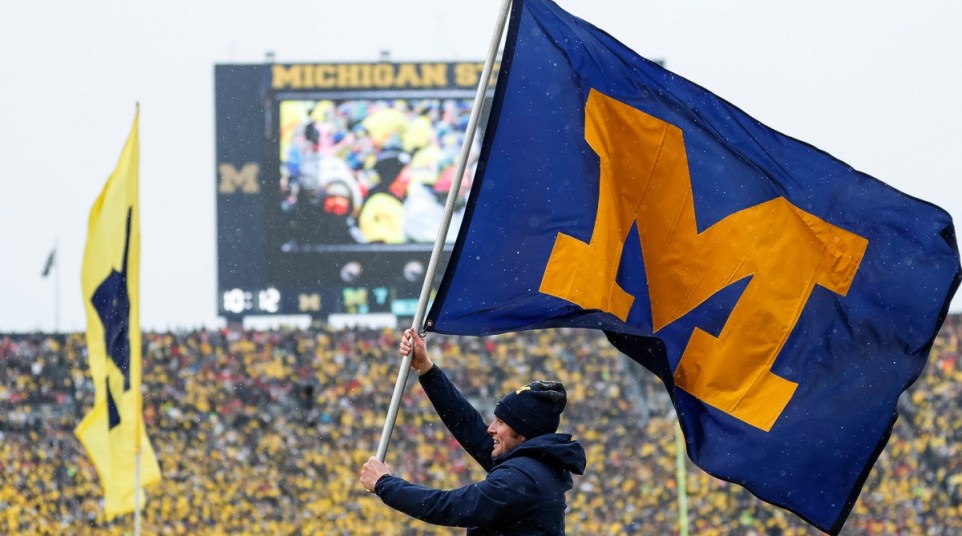
Hayes: B1G drama? Trying to figure out permanent opponents for 16-team super-conference
These deals aren’t made in a vacuum, aren’t negotiated without those paying billions getting almost everything they want.
You better believe Fox Sports, CBS and NBC aren’t paying more than $1 billion annually for Big Ten football to go without high impact games every fall Saturday.
Which leads us to the current significant hurdle in the evolution of the 16-team super-conference: permanent opponents.
Media partners want more big games annually. The Big Ten wants to be fair to all 16 teams.
“You’ll hear (conference) commissioners say television partners don’t run the show, but let’s not kid each other; those billions talk,” an industry source told Saturday Tradition. “There’s an expectation of big games — and not every 4 years.”
This is where we are with the looming Big Ten schedule format, a likely 9-game league schedule that includes 3 permanent opponents and 6 rotating — allowing each school to rotate the other 12 conference opponents biannually, playing 6 in 1 season and the other 6 the next.
Then there’s the obstacle: How does the Big Ten add USC and UCLA — 2 prime television properties — and not match them with at least 1 permanent opponent (if not more) against its current top 3 properties (Ohio State, Michigan and Penn State)?
The Big Ten can’t ask Fox, CBS and NBC to pay significant media rights fees and not receive mega games annually — games that translate to ratings (and advertising) gold. In other words, don’t expect USC’s permanent opponents to be UCLA and 2 middle of the road Big Ten properties.
One Big Ten athletic director told Saturday Tradition that 1 model proposal includes Ohio State with UCLA as a permanent opponent, and Michigan with USC.
That would give Fox/CBS/NBC 2 more mega ratings games annually, instead of the 3 media partners getting those games every other year. Or 4 more mega games (a total of 8) every 4 years if both Ohio State and Michigan add 1 of the 2 Los Angeles teams as permanent opponents.
There are other models with Penn State as a permanent opponent, and the goal for the media partners is getting the Big Ten’s biggest television properties playing annually. And don’t forget, that’s what conference expansion is all about.
Sports Betting in Big Ten Country
There is big news coming to the upcoming 2022-23 Big Ten football season (and NFL season). Ohio online sports betting and Maryland sports betting are on the way.
21+ and present in OH. Gambling Problem? Call 1-800-GAMBLER.
The Big Ten expanded — and the SEC expanded to 16, too — with the long-term goal of increased revenue distribution for its member institutions. There’s only 1 guaranteed road to increased revenue — for now, anyway — and that’s media rights.
Live sports is everything for cable and network television, the 1 thing that makes money no matter the year, no matter the economy. To take it 1 step further, live football is everything — live football drives media rights deals.
That’s why ESPN, Fox, CBS and NBC will pay the Big Ten, SEC, ACC and Big 12 in excess of $3 billion annually — not including the estimated $1.5 billion annually for a 12-team Playoff beginning in 2024 — to televise games.
You’re not paying more than $4 billion annually to 4 Power conferences and accepting a steady diet of USC vs. Indiana every year. Or UCLA vs. Rutgers. Or Oklahoma vs. Kentucky and Texas vs. South Carolina.
Television networks (and streaming sites) make money off advertising, and the most profitable games for selling advertising are those that reach 4 million viewers and above.
USC vs. Indiana every year isn’t getting 4 million viewers. USC vs. Michigan is — every single year.
If Ohio State and Michigan don’t get USC or UCLA as a permanent opponent, the Big Ten’s media rights partners will get 2 less ratings bonanza games over a 4-year period. The breakdown, for and against:
Option 1 (with Michigan as USC’s permanent opponent)
2024: Michigan at USC; USC at Ohio State
2025: USC at Michigan.
2026: Michigan at USC; Ohio State at USC.
2027: USC at Michigan.
Option 2 (with Michigan and Ohio State as only rotating opponents)
2024: USC at Michigan.
2025: Ohio State at USC.
2026: Michigan at USC.
2027: USC at Ohio State.
In option 1, the media partners get 6 elite games every 4 years. In Option 2, they get 4.
Again, the Big Ten is trying to be as fair as possible to everyone in the league, and trying to avoid loading up its marquee properties. Not everyone is going to be happy, but the idea of Ohio State playing Michigan, USC and Penn State as permanent opponents isn’t going to happen.
But it’s certainly an option for Ohio State to play Michigan, USC and Indiana.
“There will be a handful of choices, in both the Big Ten and SEC, that some teams just aren’t going to like,” the industry source said. “That’s the pushback right now. The 9 games isn’t an issue, nor are the 3 permanent opponents. It’s which teams are permanent rivals?”
The idea of rotating permanent rivals isn’t an option. The classic rivalry games are the fabric of the sport and the respective leagues — and are the games media partners desperately want.
“Our rivalry games are who we are, and the goal is to build more of those,” the Big Ten athletic director said. “But honestly, we’re fighting over the 3 (permanent games) right now.”